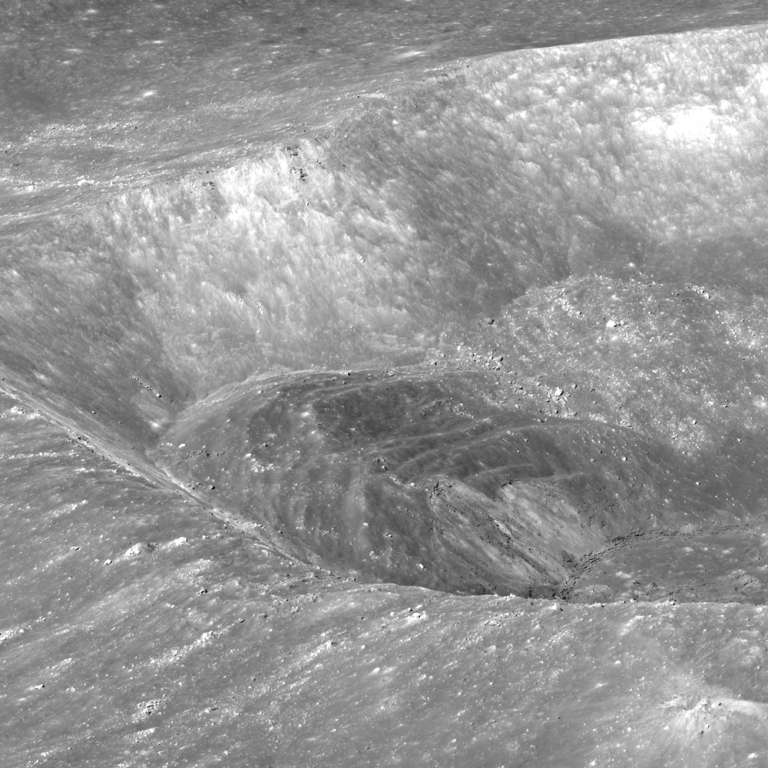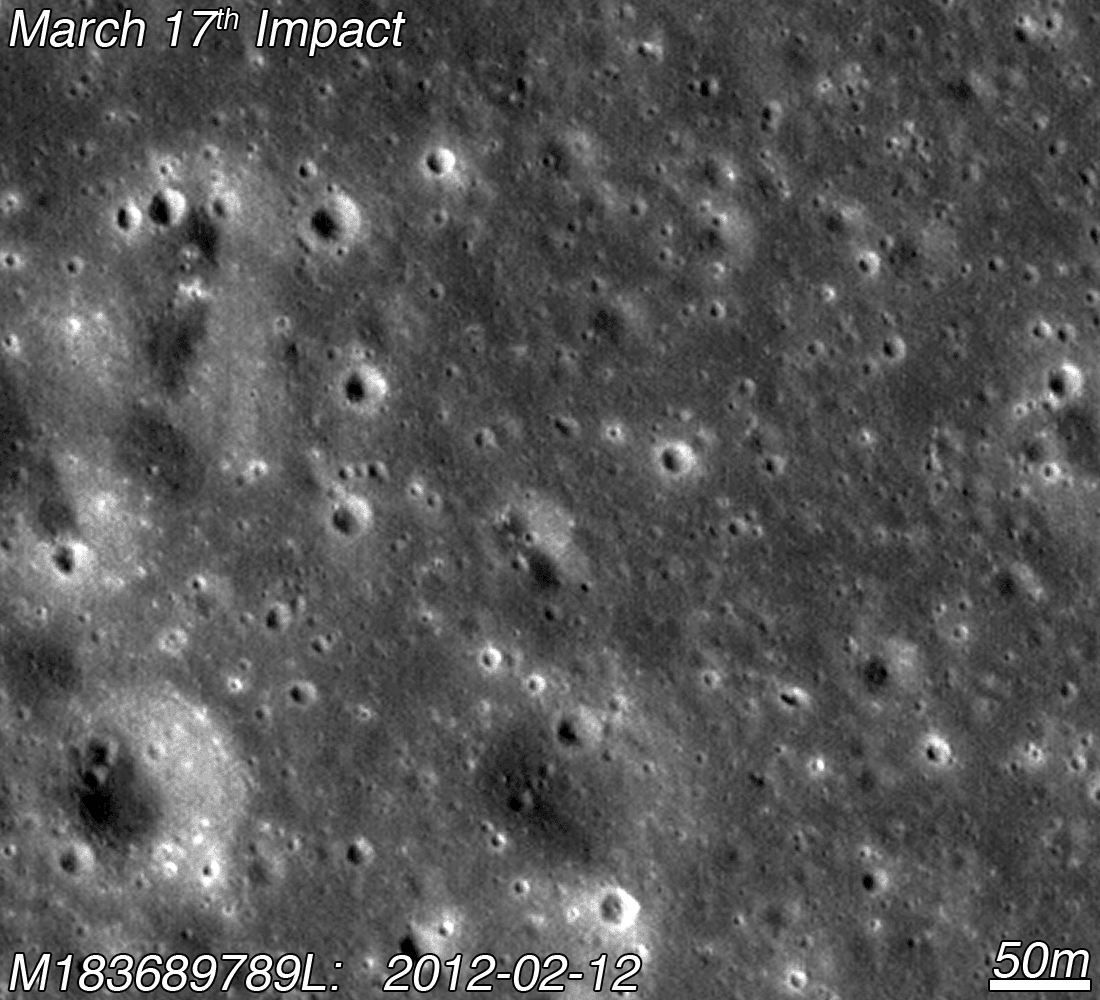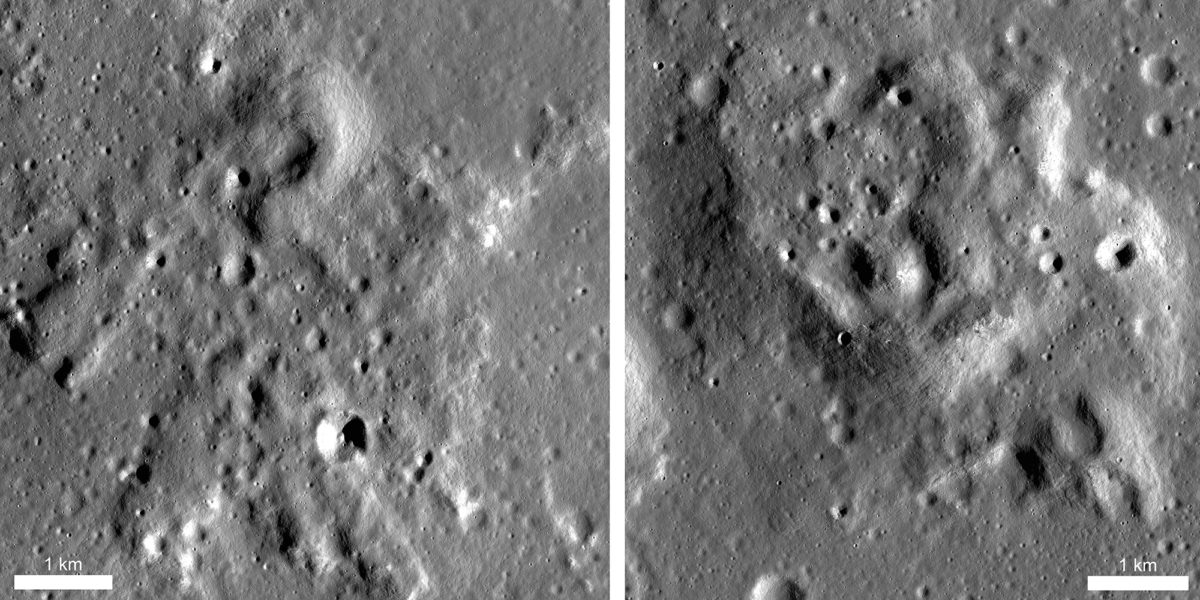Samuel Lawrence • May 29, 2014
Lunar Reconnaissance Orbiter's Ongoing Adventure
The last time I wrote a guest piece for the Planetary Society was nearly five years ago, right after the NASA Lunar Reconnaissance Orbiter (LRO) had launched. We were obviously excited about the mission and looking forward to taking a closer look at the Moon - a whole planet full of wonder and opportunity.

LRO was the first step towards returning humans to the Moon, and its instruments were selected with that goal in mind. Of course, planetary science and human exploration are not mutually exclusive - they can and should complement each other. The seven LRO instruments are incredibly well-suited for scientific observations and discoveries. Right now the LRO team understands the spacecraft and its instruments to the point where everything runs like a finely-tuned symphony as LRO continues to enable major new scientific discoveries.
Thanks to LRO, we know that Moon is an even more fascinating destination for scientific exploration and resource utilization than we even thought during the Apollo era. A few people think that when it comes to the Moon, because we've “been there, and done that,” there is nothing new left to discover. But that viewpoint could not be farther from the truth! It's safe to say that LRO has redefined our understanding of the Moon. LRO discoveries have revealed:
- The location of volatile traps at the lunar poles: Trapped polar volatiles are an incomparable resource for both science investigation and future human exploration.
- Unambiguous evidence for evolved, silicic volcanism on the lunar surface: Most of the large volcanic provinces on the Moon are rich in iron and magnesium with relatively low silica (SiO2). Lunar scientists had suspected for some time that evolved rhyolitic-like magmas were present on the Moon, because there were some tantalizing hints in the Apollo samples. Thanks to LRO, we can now say with certainty which landforms are silicic (e.g., Gruithuisen domes) and which really aren't (e.g., Marius Hills). These revelations are tremendously exciting to lunar scientists - why are these more evolved magmas present on the Moon and where did they come from? Locations like Compton-Belkovich and Gruthuisen are ripe for future surface exploration.
- New context for the Apollo samples: LRO observations enabled a re-interpretation of the geology of the Apollo 17 landing site and the context of the returned Apollo 17 samples, calling current models into question and possibly dramatically changing our understanding of lunar stratigraphy.
- Lunar tectonism: LRO dramatically changed the view that all the major tectonic activity on the Moon occurred around the nearside basins and ended long ago. The discovery of small-scale tectonic landforms expressing both contraction and extension outside of mare basins and on the farside has been one of the surprises revealed in LROC NAC images. We now know that small contractional thrust faults are by far the most common tectonic feature on the Moon; thousands have been found so far mostly in the highlands. These faults are seen as subtle scarps, generally with only a few to tens of meters of relief. By virtue of their small size and pristine appearance, these lobate fault scarps must be young, otherwise the continual rain of impactors would have obliterated them. The young faults could, in fact, be evidence of current lunar tectonic activity from stresses caused by continued interior cooling and tidal effects from the Earth (or both).
- Lunar impact diversity: One of the most compelling reasons to explore the Moon is that it is a witness plate to over four and a half billion years of Solar System history - a span whose earliest phases are completely lost on Earth. Not only is the Moon's early geologic history accessible, but a record of the recent history of the Solar System is also preserved on its surface. LRO images have shown us the incredible complexity of the lunar impact cratering process, from ancient degraded craters to large basin-forming impacts to small impacts that happened last year! These new observations will let us improve models for how this most fundamental of Solar System processes works.
But the LRO mission is by no means complete. This amazing spacecraft continues to produce an incredible bounty of scientific results. There were no less than 146 abstracts (including 18 talks) presenting new results from the LRO team at the 2014 Lunar and Planetary Science Conference (LPSC) - and that number does not include the numerous talks and posters from other scientists that used LRO data as part of their own research. Emily, of course, blogged LPSC results, but after consulting with some of my colleagues, we came up with some additional highlights.
The recently-concluded NASA Lunar Atmosphere and Dust Environment Explorer (LADEE) mission presented a unique opportunity for coordinated observations of the lunar exosphere in concert with two other NASA missions, LRO and the Acceleration, Reconnection, Turbulence and Electrodynamics of the Moon's Interaction with the Sun (ARTEMIS) mission. LRO-LAMP (Lyman-Alpha Mapping Project, a far-ultraviolet spectrometer) measurements of the lunar exosphere were intensified during the LADEE mission as part of a coordinated effort. LAMP and the LADEE Neutral Mass Spectrometer both measure helium atoms in the lunar environment, while ARTEMIS measures the rate of incoming solar wind helium ions. These diverse measurements show close correlations that inform our understanding of how solar wind particles interact with the lunar surface. These solar wind interactions are a leading candidate for the production of water observed on the lunar dayside surface. Molecular hydrogen is another exospheric species similarly produced from solar wind protons, and LAMP measurements of hydrogen during the LADEE campaign promise to provide new insights into how the process works.
One of the primary goals of LRO is searching out polar volatiles, including the distribution of frozen water in permanently shaded regions (PSRs), assessing volatile stability and dependence on the surface temperatures within and near the permanently shadowed regions, and determining volatile influence on surface reflectivity and other physical properties. All of the LRO instruments are working together and we can compare measurements from LRO's infrared laser (LOLA), the far-ultraviolet spectrometer (LAMP), the thermal infrared radiometer (Diviner), the radar (Mini-RF), neutron scattering (LEND), energetic radiation (CRaTER), and visible imaging system (LROC). LOLA reflectance measurements, for example, showed evidence for surface frost in some PSRs, and the LROC team is now trying to image these potentially transient frosts. The recent comparisons (some of which were presented at the 2014 LPSC meeting) between LROC, LOLA, LAMP, and Diviner measurements reveal the PSRs to have a unique set of thermophysical properties from the rest of the Moon. Figuring out the nature of these differences, and how they evolve with time, is now a key part of the proposed second LRO extended mission.
One of the most fascinating new observations presented at LPSC this year was the LROC images of a new impact crater formed on 17 March 2013, which was witnessed by an automated camera run by a team of scientists at NASA Marshall Space Flight Center. A systematic effort by the LROC team not only located the crater produced in that 17 March impact, but also revealed that a field of secondary craters was produced by the impact and extended much farther from the original impact than modeling predicted. This discovery is a case where new observations continue to inform our models and improve science investigations throughout the Solar System while providing crucial new information to guide the design of future spacecraft and outposts.

At LPSC this year, members of the LROC team reported several hundred newly-identified volcanic cones. The Moon has a tremendous diversity of volcanic landforms that we are seeing clearly for the first time. Volcanic cones - similar to spatter cones encountered on the Big Island of Hawai'i - are important aspects of mare volcanism whose composition, structure, and formation mechanisms remain poorly understood. As LRO continues to make new observations of these landforms at high resolution (including more 3-D stereo observations), we'll be able to figure out the true geographic distribution of volcanic landforms, which in turn will help us to create and test hypotheses about how Moon's crust has changed and evolved over time.
The LRO spacecraft is healthy with a generous reserve of fuel. All of its instruments continue to produce vital new results and observations. While polar NAC coverage is reasonably complete as LRO enters its fifth year of operations, in the nonpolar regions (meaning: 45° N to 45° S) the Moon remains only about 60% mapped at the scale of the LROC Narrow Angle Cameras (0.5 to 2 meters per pixel). One of the things that we're finding to be most useful about LRO's longevity is the tremendous capability LRO gives us to record changes on the Moon in space and in time, with new observations driving new scientific discoveries. For example, as the LRO observations of the 17 March impact dramatically demonstrate, the Moon is the best natural laboratory to understand the impact process. By locating new impact craters as they form, we can improve our calibrations of the present-day impact cratering rate that is so important for planetary science research on all of the terrestrial planets. A detailed and accurate accounting of the new craters (big enough to see in NAC images, but too small to be seen by other instruments or terrestrial telescopes) is going to be another of many new science objectives of the proposed second LRO extended mission.

LRO's orbital documentation of the Chang'e 3 landing site demonstrated that LRO instrument support could dramatically increase the scientific productivity of any future mission to the lunar surface. If LRO is still active when future missions reach the surface, LRO's ability to rapidly place spacecraft location and activities into ready geologic context (much like MRO provides the Mars rovers) will undoubtedly be a tremendous asset for future missions.
On a personal note, working on the LRO mission has surpassed even my wildest pre-launch expectations. I joined the LRO team fresh out of graduate school, and it continues to be incredibly exciting to play my small role on this dedicated team. It is an honor and a privilege to work on any space mission, and I can personally attest to the fact that one of the valuable contributions that the LRO mission continues to make is the training and education of the next generation of scientists and engineers. Undergraduate and graduate students continue to be systematically incorporated into key aspects of the mission at ASU and other LRO institutions. The students who work on the LRO mission get exciting practical experience in planetary science and spacecraft operations, which is direct and meaningful exposure to the wonders of astronautical engineering and planetary science that they literally cannot get anywhere else.
For people interested in what LRO is up to lately, I recommend checking out the main LRO web page at NASA Goddard Space Flight Center, and be sure to check out the newly-revamped ASU LROC web page. The LROC team updates our web page a few times a week with spectacular new views of the Moon, accompanied by scientific explanation of the significance of each image.
LRO remains a cornerstone of NASA's mission portfolio, flawlessly executing an epic mission of discovery at one of the most spectacular locations in our Solar System. Despite the fact that humans walked on the Moon and returned samples six times four decades ago, LRO continues to show every day just how little we know about the Moon - and what an incredible target it is for continuing exploration by LRO and future missions.
Thanks to Kurt Retherford, Ben Greenhagen, Paul Spudis, Tom Watters, Jeff Plescia, and Brett Denevi for their contributions to this article.
Support our core enterprises
Your support powers our mission to explore worlds, find life, and defend Earth. You make all the difference when you make a gift. Give today!
Donate

 Explore Worlds
Explore Worlds Find Life
Find Life Defend Earth
Defend Earth

